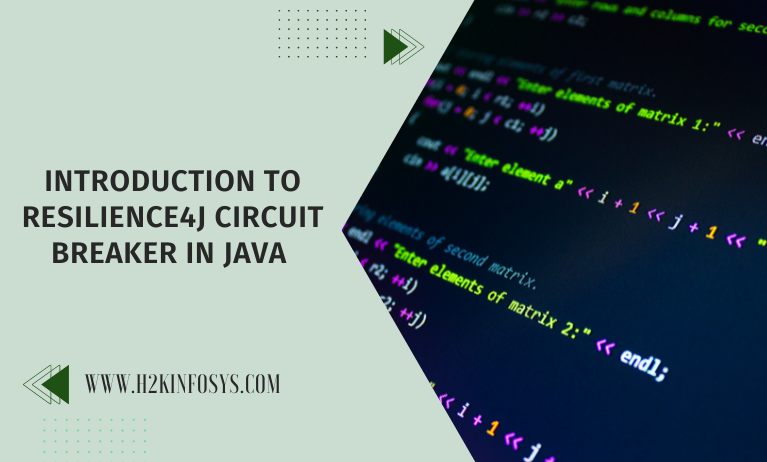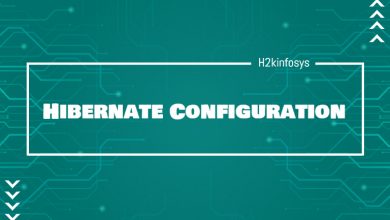Introduction to Resilience4j Circuit Breaker in Java

Multiple services are interconnected through Circuit Breaker in Java one another in a microservice resilience4j Circuit architecture, so it is always possible that the service being contacted is inaccessible or unable to answer. What then can we do? The resilience4j circuit breaker java enters the picture at this point.
Any system that has to operate efficiently must be resilient, and the resilience4j Circuit Breaker is no exception. By handling faults and minimising cascade failures, the resilience4j Circuit Breaker is a frequently used pattern in software engineering that contributes to the resilience of a system. You can learn Java online to be able to apply the Resilience4j Circuit Breaker.
What is a Circuit Breaker?
A resilience4j design pattern called Circuit Breaker keeps track of the status of a certain service or resource. It is intended to identify instances where a specific service has a high failure rate or when the response time is excessively long. When such an occurrence is detected, the circuit breaker will “trip,” which indicates that it will stop making requests to the service or resource and will instead send back a default response that has been predetermined.
States of Circuit Breaker
There are 3 of them. Half-Open, Closed, and Open
The circuit breaker permits requests to reach the service or resource when it is in the Closed state. The circuit breaker will trip and change to the Open state if the service or resource frequently fails or responds slowly. The circuit breaker responds to incoming queries in the Open state by returning a predetermined default response. By doing this, it becomes easier to stop sending requests to the service or resource until it has recovered.
The circuit breaker will go into the Half-Open condition after a set amount of time. In order to determine whether the service or resource has recovered, the circuit breaker permits a certain number of requests to flow through to it in this state. The circuit breaker will return to the Closed state, enabling all requests to proceed normally, if the service or resource can manage the requests without any issues or sluggish response times. The circuit breaker will trip once again, going back to the Open state, if the service or resource is still having problems.
Let’s look at the following configurations:
- Sliding-window-type: We are utilizing the count-based type in this, and for each request, it will either cut the circuit or shift it to an open state.
- Sliding-window-size: In this, we’ll keep track of the most recent five service calls, make a circuit from a cut or open condition, and record the most recent number of requests.
- Slow call rate ceiling: This property lets you define a limit for the frequency of sluggish calls. Slow calls take longer than the allotted time to reach a remote service. Resilience4j can send a Slow Call Rate Threshold Exceeded Event to notify the application that there is a problem with the remote service when the rate of slow calls exceeds the defined threshold.
- Permitted number of calls in the half-open state: This value specifies the most requests or events that can go through the circuit breaker while it is partially open. If more requests are received after this limit has been achieved, the circuit breaker switches back to the open position.
- Maximum time to wait while partially open: According to the results of the requests made during the half-open state, this property establishes the longest time a circuit breaker can stay in the half-open state before switching back to either the closed or open state.
- Wait duration in the open state: The amount of time a circuit breaker waits in the open condition after tripping the failure threshold is referred to as the wait period. In the open state, the circuit breaker blocks requests from reaching the remote service and instantly raises an exception or provides a failure answer rather than attempting to carry out the request.
- The writable stack track property controls whether writable stack traces are made available for exceptions that the circuit breaker throws. When set to true, the exception issued by Resilience4j will include the stack trace of the initial exception that opened the circuit breaker. If set to false, the original exception’s stack trace will be lost and replaced with the stack trace of the Resilience4j exception.
- The automatic transition from open to half open enable: This property controls whether the circuit breaker automatically switches from the open state to the half-open state. When set to true, when the waitDurationInOpenState has passed, the circuit breaker will automatically try to switch from the open state to the half-open state. The circuit breaker will remain in the open position until manually reset if set to false.
- Ignore Exception: This property lists the exceptions or error kinds that the circuit breaker should disregard. These exceptions will not be reported as failures for requests and will not cause the circuit breaker to trigger.
- Record Exception: The list of exceptions or error kinds that the circuit breaker should log is specified by this parameter. These exceptions will be considered failures for the sake of counting requests that result in them, and the circuit breaker will trip as a result.
- Failure-rate threshold: This will enable the state to be opened in accordance with the settings and provide the total number of unsuccessful calls. In 2 out of 5 unsuccessful calls, the state will switch from cut to open.
For software developers, the circuit breaker layout offers a number of advantages. First, it can lessen the impact of a failure on users by assisting in the prevention of faults from spreading through a system. Second, by offering a means to identify and isolate faults, it can assist increase the general stability of a system. Finally, by limiting the number of requests sent to a service that is known to be unreliable, it can help a system function better.
Conclusion
A crucial tool for creating robust systems that can manage faults and stop cascade failures is the Circuit Breaker pattern. The circuit breaker offers a technique to make sure that systems can handle problems and recover by keeping track of the state of a service or resource and tripping as necessary. If you are a Java developer, you can check out the Java developer course to learn more.





